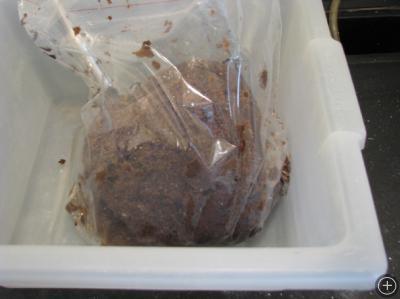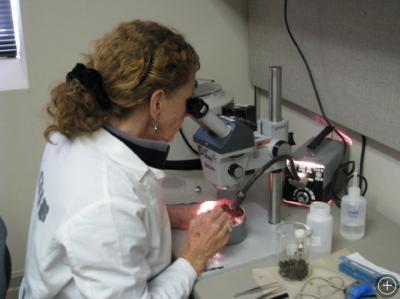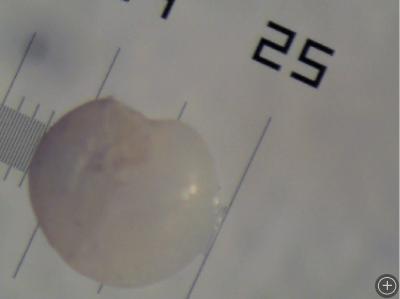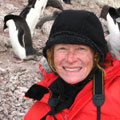Penguin Poop Provides Answers
CAPE ROYDS, ROSS ISLAND, ANTARCTICA– Not all of our work is in the field; some requires time in a lab and long hours working with a stereoscope. One of the questions we are trying to answer is what do the penguins eat? In previous times researchers would sacrifice a penguin and examine their stomach contents. It was a good way to gather data, but hard on the birds. Another way is to flush the birds stomach which does not harm the bird, but it does make them loose a days worth of food gathering.
At Cape Royds we watch to see what the adults are feeding their chicks. If it is pink, then the main portion of the food is krill, if it is silver then it is fish. But what kind of fish? That is where the penguin poop tray comes in. At the end of last season we set out a large tray with a fine mesh in an area where penguins have regularly nested. After the breeding season was over and the nesting adults and chicks were gone, the tray was full of penguin guano. Several washings and sortings to eliminate the large stuff later, we sift through the rest looking for otoliths (fish ear bones) which will tell us what kind and how old the fish is. The bones do not get digested so they are passed through. It’s messy work, but important knowledge to gain about Adelie Penguins and their eating habits.
















To research diet without in any way harming the penguins is quite a contrast with Japan’s so-called whale research. Good for you.
It is especially good to hear directly from practitioners in the field while they are on assignment.
Make no mistake, a growing number (already large) of humans treasure wildlife. Your work is important, so I hope you find it rewarding.
Best wishes,
Ray Zimmerman, B.Sc.F. R.P.F. (retired)
Kamloops, B.C., Canada